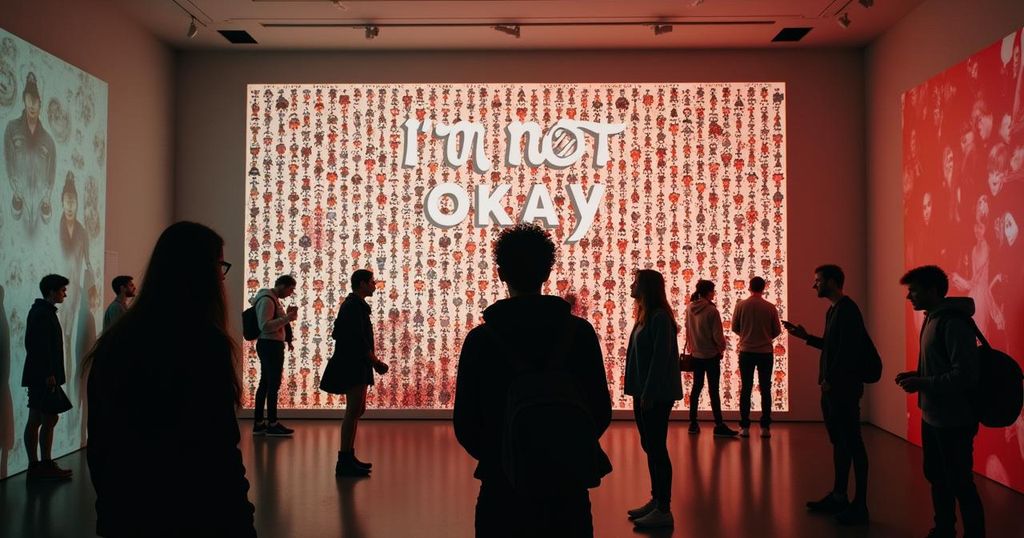A new exhibition at London’s Barbican Centre, titled ‘I’m Not Okay (An Emo Retrospective)’, explores the significance of emo culture from 2004 to 2009. It features personal photographs and addresses themes of mental health, identity, and community in youth culture. The free exhibition runs until January 15, 2025.
The Barbican Centre in London has launched a new exhibition titled ‘I’m Not Okay (An Emo Retrospective)’, celebrating the impact of emo culture on a generation. This free exhibition is available at The Barbican Music Library until January 15, 2025, with a focus on the emo scene’s rise between 2004 and 2009. It showcases personal photographs from that era, highlighting the connection between the scene and the internet. The exhibition, a collaboration between the Museum Of Youth Culture and the City Of London Corporation, explores how emo music and culture allowed teenagers to express their feelings through lyrics, fashion, and identity. It highlights the genre’s role in addressing important issues such as mental health and inclusivity. In essence, ‘I’m Not Okay’ reflects a pivotal moment in youth culture, touching upon related movements like Pop Punk and Screamo.
Emo culture emerged in the early 2000s, characterised by its emotional expression and unique aesthetics. Bands like My Chemical Romance and Fall Out Boy resonated with many youths, fostering a sense of community among fans. The period from 2004 to 2009 marked a significant surge in popularity for this genre, coinciding with the rise of digital platforms that linked music with internet culture. This exhibition looks back at those formative years for emo music and its influence on today’s digital youth movements, bridging the gap between past and present subcultures.
The ‘I’m Not Okay’ exhibition provides an insightful retrospective on emo culture, illustrating its significance in youth expression and identity formation. It offers a nostalgic look into a transformative period that shaped not only music but also the broader cultural landscape, fostering acceptance and community among adolescents.
Original Source: rocksound.tv







